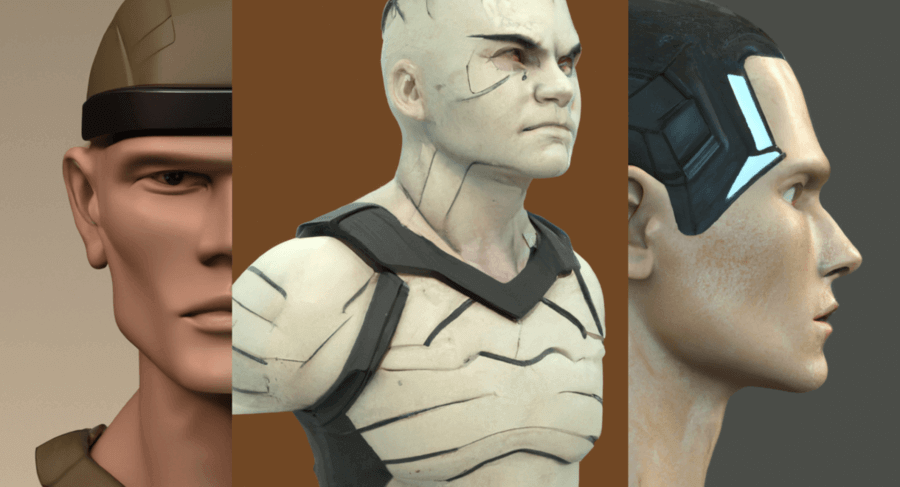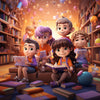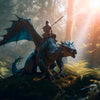Tips for Gaming Companies: What to Look for in 3D Models and characters

In the gaming industry, 3D models play a crucial role in creating immersive experiences for players. While some gaming companies have in-house expertise in developing 3D characters and assets, many outsource it to specialized agencies like My3dmodels. In this blog post, we'll provide tips for gaming companies to consider when selecting 3D models, creating them or finding the best 3d designing partner for their games.
Technical Considerations:
When selecting 3D models, it's important to consider the technical aspects, including the polygon count, texture quality and resolution, lighting and shading considerations, rigging, and animation. High polygon count can lead to lagging or slow performance, so optimizing models for game engines is essential.
Polygon count:
The polygon count of a 3D model refers to the number of triangles or quads that make up its surface. A higher polygon count can lead to a more detailed and realistic model, but it can also impact the performance of the game. Therefore, it's important to strike a balance between quality and performance by optimizing the polygon count for the intended use.
Texture quality and resolution:
Textures add color, detail, and depth to 3D models, and their quality and resolution can greatly affect the overall look of the game. High-resolution textures can create more detailed and realistic models, but they can also increase the file size and affect performance. Therefore, it's important to optimize textures for the intended use while maintaining a balance between quality and performance.
Lighting and shading considerations:
Lighting and shading can greatly affect the visual appeal and realism of a 3D model. Proper lighting and shading techniques can enhance the details and textures of the model, while poor lighting can make it look flat and unrealistic. It's important to consider the game's environment and art style when choosing the appropriate lighting and shading techniques.
Rigging and animation considerations:
Rigging is the process of creating a system of joints and controls that allow 3D models to move realistically. Animation is the process of creating movement for those models. The quality and effectiveness of rigging and animation can greatly impact the overall gameplay experience. It's important to ensure that 3D models are rigged and animated properly to create realistic and natural movements.
Design Considerations:
Design is also an important consideration when selecting 3D models. Consider realism versus stylization, color and material choices, design consistency across assets, and compatibility with the game's art style.
Realism vs stylization:
When designing 3D models for games, it's important to consider the balance between realism and stylization. Realistic models can add authenticity and immersion to a game, while stylized models can add character and personality. The decision between realism and stylization should be based on the game's genre, audience, and intended experience.
Color and material choices:
Color and material choices can greatly impact the mood and feel of a game. It's important to choose colors and materials that are appropriate for the game's environment, characters, and story. Additionally, using consistent color schemes and materials can enhance the overall visual cohesion of the game.
Design consistency across assets:
When creating 3D assets for a game, it's important to ensure consistency in design elements such as color, texture, and style. Consistency can enhance the overall visual coherence of the game and improve the player's immersion. Additionally, it can make it easier to create new assets that fit seamlessly into the game's environment.
Compatibility with game's art style:
3D models should be designed to match the art style of the game. This includes considering elements such as lighting, texture, and level of detail. Matching the art style can create a cohesive and immersive experience for players, while inconsistency can create visual distractions that take away from the gameplay experience.
At My3dmodels, we have experience in adapting to different game art styles and ensuring design consistency across assets. Our team of 3D artists and designers work closely with gaming companies to create customized 3D models that match the game's art style and enhance the overall gameplay experience. Whether it's a realistic or stylized approach, we can help bring your game to life with high-quality 3D models.
Optimization Considerations:
In addition to technical and design considerations, optimization is crucial to ensure the best performance for games. Techniques like polygon reduction and texture optimization can help reduce the file size without sacrificing quality. LOD (Level of Detail) models can also be used to ensure that models are optimized for different levels of gameplay.
Importance of optimizing 3D models for game engines:
Optimizing 3D models for game engines is important because it can significantly impact the game's performance. Poorly optimized models can lead to longer load times, frame rate drops, and other technical issues. To optimize 3D models, it's important to consider factors such as polygon count, texture resolution, and LOD (Level of Detail) models.
Polygon reduction techniques:
Reducing the polygon count of 3D models can improve the game's performance by reducing the amount of processing power required to render the model. This can be achieved through techniques such as simplifying the geometry of the model or using LOD models. However, it's important to ensure that the reduction in polygons doesn't negatively impact the overall visual quality of the model.
Texture optimization techniques:
Texture optimization techniques can help reduce the file size of textures without sacrificing visual quality. This can improve the game's performance by reducing the amount of memory required to load and render textures. Techniques such as compression and mipmapping can be used to optimize textures.
Importance of LOD (Level of Detail) models:
LOD (Level of Detail) models are simplified versions of 3D models that are used to improve performance. By using LOD models, game engines can render less detailed models when they are farther away from the player, reducing the processing power required to render the model. Using LOD models can also reduce the amount of memory required to load and render models.
Collaborative Considerations:
Clear communication between 3D artists and game developers is essential for successful collaboration. Collaboration tools and platforms can help facilitate this process, and using consistent file formats and naming conventions can help ensure seamless collaboration. As a professional agency with several years of experience, My3dmodels can help facilitate collaboration and provide high-quality 3D models.
Conclusion:
When selecting 3D models for games, it's important to consider all factors, including technical, design, optimization, and collaboration considerations. My3dmodels can help gaming companies by providing outsourcing services for 3D designing, character development, rigging, texturing, modelling, rendering, and more, so that they can focus more on their core business of game development.
We specialize in providing high-quality 3D models that elevate the immersive experience of game development. Our team of expert 3D artists and developers can help gaming companies with all outsourcing services related to 3D designing




